Australia’s passport combines visual elements and advanced technologies to make it one of the world’s most secure and beautiful travel documents.
The R Series passport
The Australian Passport Office issued the first R Series passport in September 2022. The P Series passport, issued before the R Series, is still a highly secure travel document and can be used until it expires.
R Series passports, including those issued with both 10-years validity for adults and 5-years validity for children (aged under 16) and seniors (aged 75 and over), contain 38 pages, of which 34 are visa pages used for entry/exit stamps and visas.
All Australian passports meet the standards set by the International Civil Aviation Organization(Opens in a new tab/window).
Advanced technology and security features
The Australian passport is designed, printed and assembled in Australia. It has advanced security features to prevent counterfeiting and identity theft and keep Australians safe. On the photo page, these features include:
- a raised map of Australia on the bottom left-hand side
- a transparent window with a second coloured photo of the passport holder
- other windows that include the antenna for the passport chip, which is embedded in the passport.
The R Series photo page is also made from polycarbonate. Polycarbonate is more durable than laminated paper. It's less likely to tear and prevents other minor damage that can cause difficulties for travellers when crossing borders.
Other passport elements and security features are visible under ultraviolet light.
On the visa pages, the sky in each Australian landscape becomes a unique nightscape, revealing a local species of native fauna.
The photo page turns bright red, revealing a red and white wattle on the inside front cover.
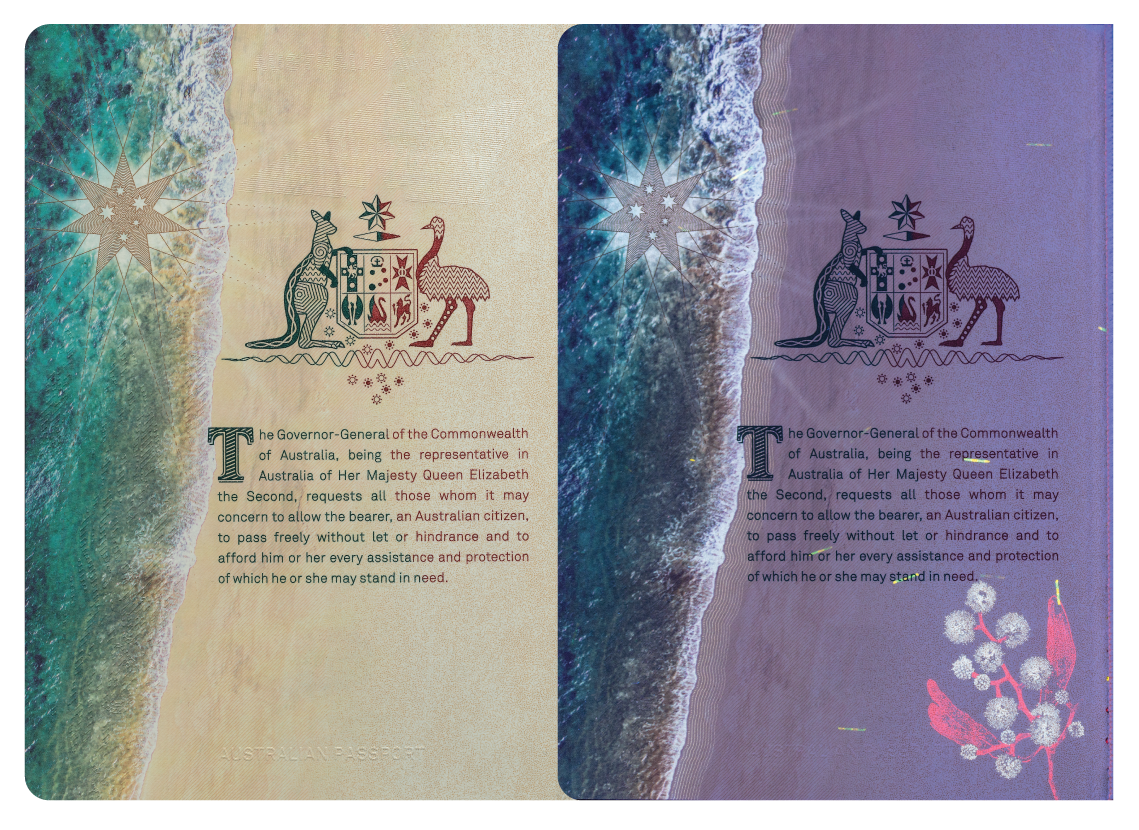
A journey around Australia through the R Series passport
The R Series passport takes you on a visual journey around Australia. The inside front and back cover pages represent the East and West Australian coastlines, and the visa pages showcase 17 iconic landscapes from around the country.
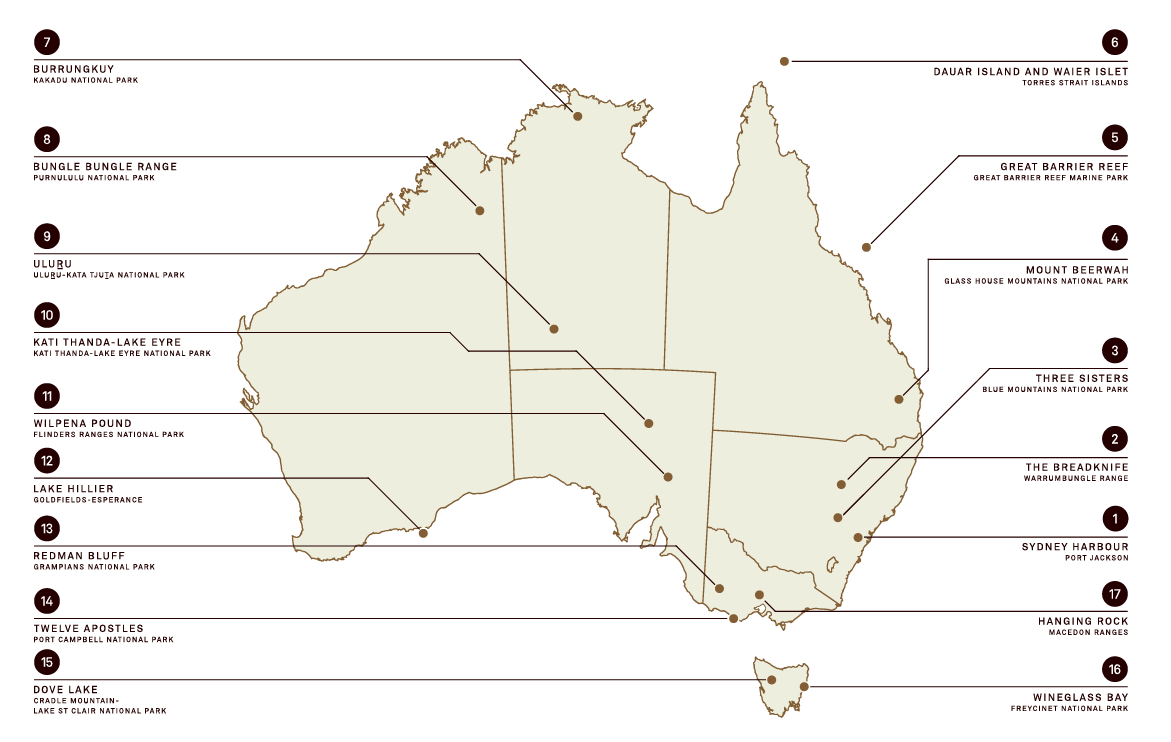
Many of these iconic landscapes hold great cultural significance for local Indigenous communities and are often featured in their Dreamtime stories. Two such Australian landmarks featured in the R Series passport include Uluru, in the Northern Territory, and Dauar Island and Waier Islet, part of the Torres Strait Islands.
Uluru, Uluru-Kata Tjuta National Park
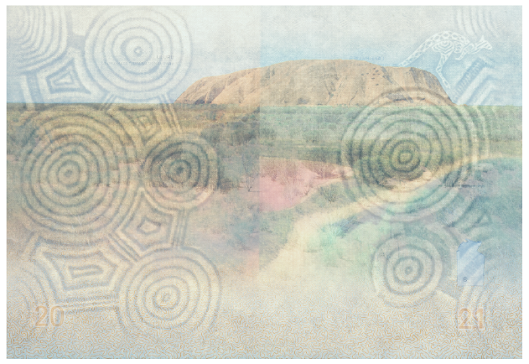
Uluru is a large sandstone landmark in the Northern Territory. It's often referred to as the ‘red centre’ of Australia. As a symbol of this, an image of Uluru is featured in the centre pages of the R Series passport.
The stitching holding the passport together is most noticeable on the centre pages. In normal light, the thread colours are charcoal, ochre and white, drawn from Uta Uta Tjangala’s painting, Yumari(Opens in a new tab/window) (1981).
Under ultraviolet light, the threads change to black, red, and yellow – the colours of the Aboriginal flag. The image of Uluru transforms into a nightscape, revealing the night sky, stars and native fauna.
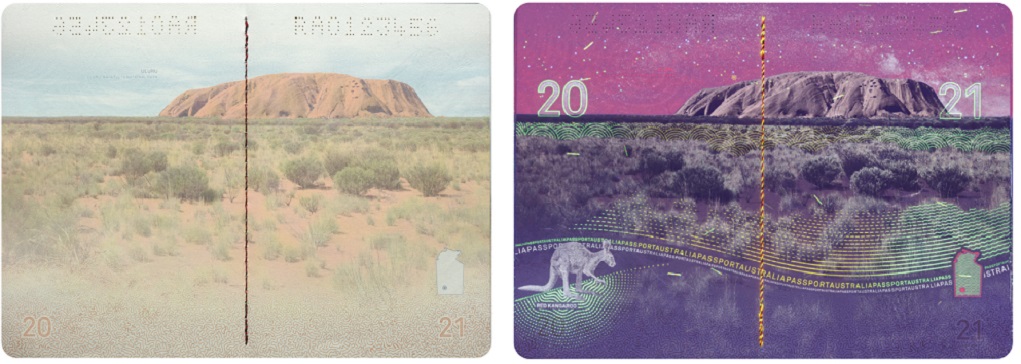
Sidney James, Anangu Elder and Chair of Uluru-Kata Tjuta National Park, comments:
“It’s a good picture… people can come and see Uluru, get on a plane and come from all over Australia, all around the world. People can show others around the world places in the passport like Uluru, Sydney Harbour Bridge… it is nice for people to come from all over to see the Red Centre…”
Dauar Island and Waier Islet, Torres Strait Islands
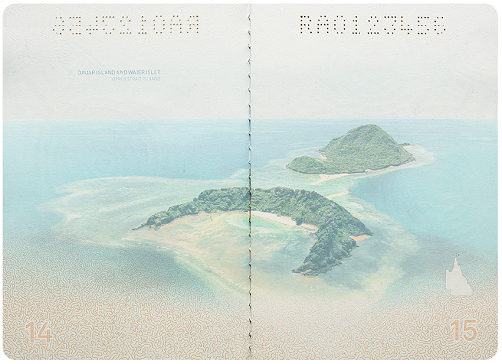
Dauar Island and Waier Islet are part of the Maer (Murray) Island group of the Torres Strait Islands, located north of the Great Barrier Reef.
Watch our video of Mr Charles Passi, Dauareb tribesman representing the Traditional Owners of Dauar Island and Waier Islet, talking about the significance of the Australian passport featuring this location.
Indigenous art and cultures
Aboriginal and Torres Strait Islander people should be aware that this content may contain images, voices and names of people who have died.
Indigenous artwork has featured in Australia’s passport since 2009. The R Series passport continues this proud history, incorporating the work of two esteemed Aboriginal artists – the late Uta Uta Tjangala and the late Michael Nelson Jagamara AM.
A watermark throughout the passport is based on Uta Uta Tjangala’s renowned Yumari(Opens in a new tab/window) (1981) painting. There are references to Yumari on the observations page and each visa page. The watermark is just one of the many security features built into the design of the passport.
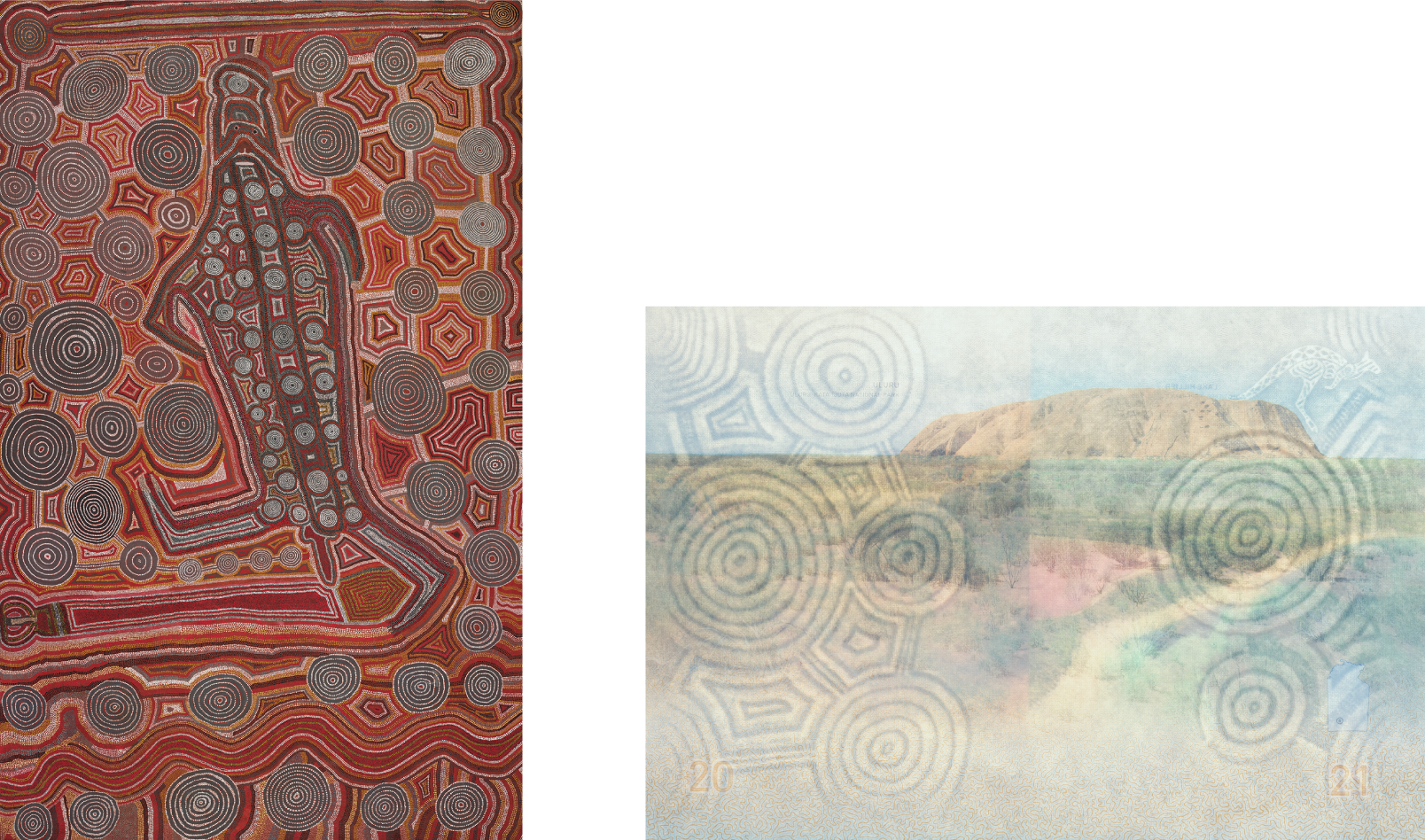
Possum and Wallaby Dreaming(Opens in a new tab/window) (1985), by the Warlpiri artist Michael Nelson Jagamara AM (c. 1945–2020), is a key design element of the R Series passport. It's included on the polycarbonate data page, the security features page, the observations page, and the important information page.
The data page shows the circle pattern around the passport holder’s image in the transparent window. As well as being visually appealing, this feature also protects the passport holder’s details.
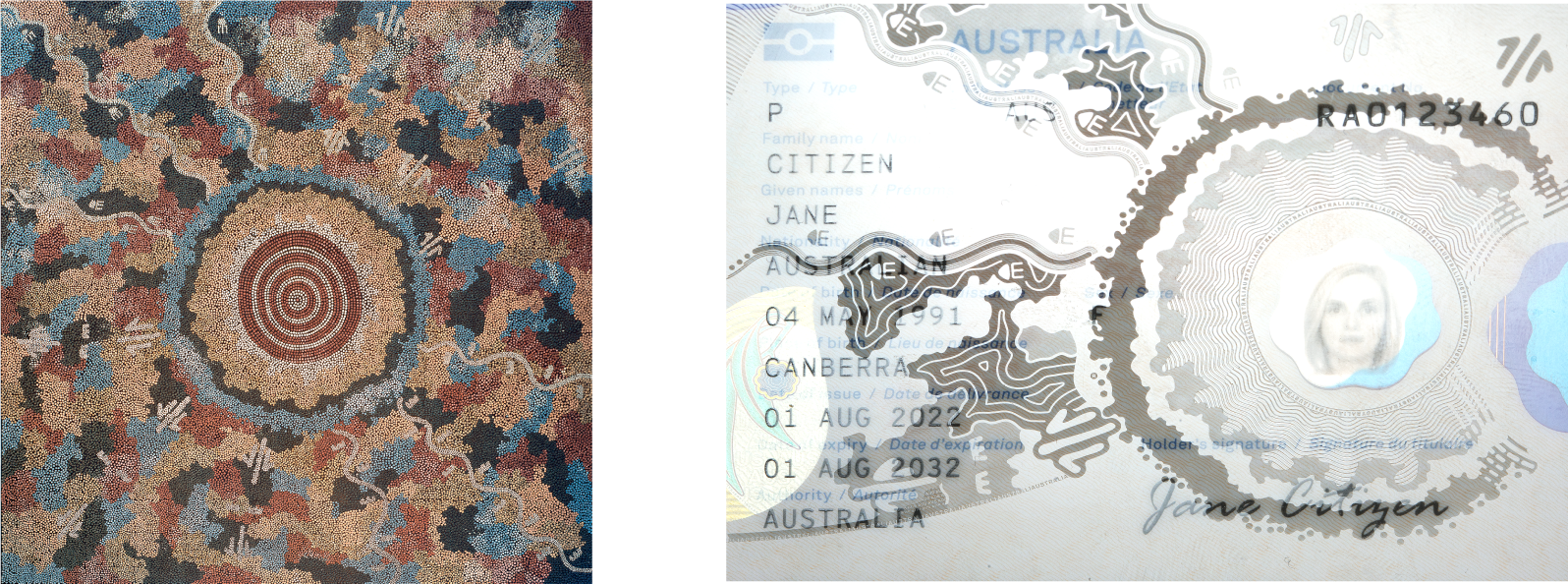
Yumari (1981) and Possum and Wallaby Dreaming (1985) are licensed by Aboriginal Artists Agency Ltd © estate of the artist | Aboriginal Artists Agency Ltd.